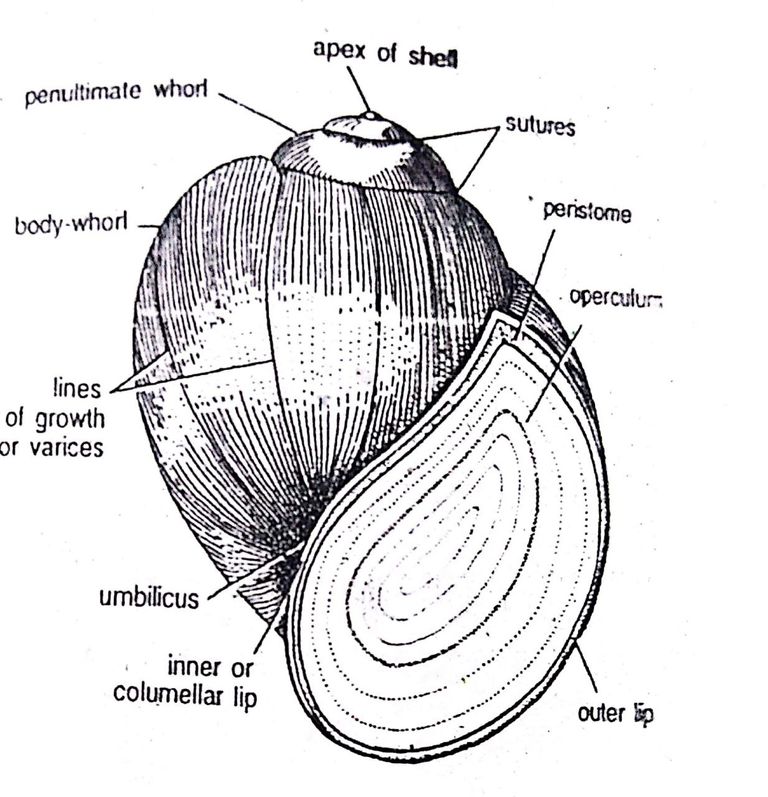Pila is a genus of large freshwater snails commonly known as apple snails. These snails have a distinct external morphology that is characteristic of their species. Here is a description of the external features of Pila snails

Source: Wildlife BD
Shell: The most prominent feature of Pila snails is their large, spiral-shaped shell. The shell is usually conical in shape, with a pointed apex. It is composed of calcium carbonate and serves as protection for the soft body of the snail. The shell can vary in color and pattern, ranging from brown and yellow to dark green. It may also have distinctive spiral bands or stripes.
Body: The body of a Pila snail is soft and elongated. It is divided into different regions:
Head: At the anterior end of the body, you will find the head. It contains sensory organs such as a pair of tentacles. The upper pair of tentacles houses the eyes, which are small and located on the tips.
Foot: The foot is a muscular structure that extends from the head to the posterior end of the body. It is used for locomotion and attachment to various surfaces.
Mantle: The mantle is a fleshy structure that covers the upper part of the body and secretes the shell. It plays a crucial role in shell formation and repair.
Operculum: Pila snails possess an operculum, which is a hard, plate-like structure located at the posterior end of the foot. The operculum functions as a protective door, sealing the opening of the shell when the snail withdraws inside.
Siphon: Pila snails have a siphon, also known as a breathing tube or snorkel. The siphon extends from the body and can be extended or retracted. It allows the snail to reach the water's surface to obtain oxygen without fully emerging from the shell.
Reproductive Organs: Pila snails are gonochoristic, meaning they have separate sexes. The reproductive organs are located near the head, within the body. Female snails have a larger and wider genital opening compared to males.
It's important to note that the specific features and size of Pila snails may vary depending on the species and individual snail. The described external morphology provides a general overview of the common characteristics of this genus.